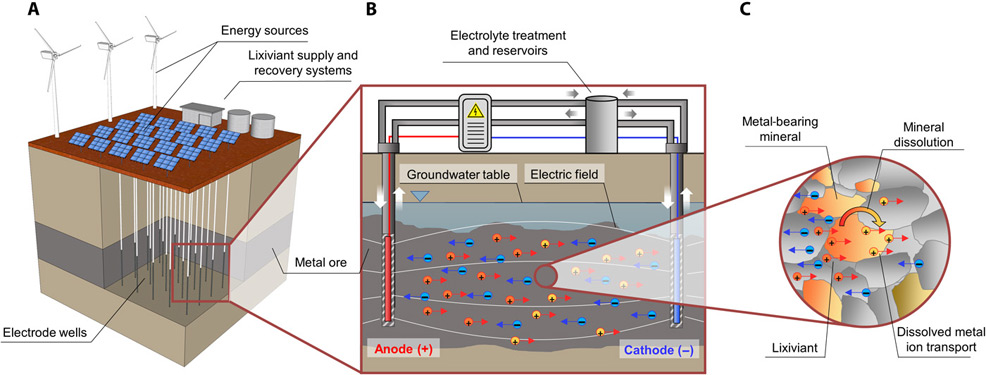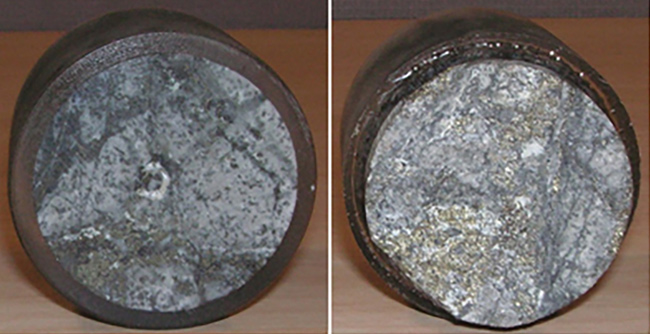
6th May 2021 New extraction method could revolutionise mining A new process that involves drilling electrodes directly into an ore body could lead to a more sustainable mining industry, without the need to remove huge volumes of surface soil and overburden.
Scientists have developed a new method to extract metals, such as copper, from their parent ore body. The international research team has demonstrated a proof of concept for the application of an electric field, which controls the movement of an acid within a low permeability copper-bearing ore deposit, to selectively dissolve and recover the metal in situ. This is in contrast to the conventional approach for the mining of such deposits, where the material must be physically excavated, which requires the removal of both overburden and any impurities within the ore (known as gangue material). The central principle behind most modern mining techniques has not fundamentally changed since their original conception, which marked the beginning of the Bronze Age: metals are recovered from the subsurface via construction of tunnels to gain access to deposits, or by creating "open cast" mines. This traditional approach demands huge volumes of surface soil, overburden and gangue material to also be excavated, containing millions of tonnes of material and often leading to habitat destruction. Clean technologies rely on a variety of metals and minerals, with batteries for electric vehicles being the most significant driver of accelerated demand. Within a few decades, demand for cobalt could increase by as much as 423%, for example, alongside lithium (280%) and nickel (136%). New extraction methods are now urgently required, to supply the plethora of metals needed for future clean energy projects and electric vehicles, whilst limiting the environmental damage associated with mining of such vitally important materials.
Dr Rich Crane, a senior lecturer in sustainable mining from the University of Exeter, said the new approach demonstrated by his team is analogous to laparoscopy – also known as "key-hole surgery" – a medical procedure that involves a fibre optic cable snaking its way into a human body. In laparoscopy, the cable's long, thin shape makes a target area more easily accessible and results in less pain and bleeding, due to smaller incisions. Dr Crane and colleagues have published their work in the peer-reviewed journal, Science Advances. They believe their new technique has the potential to transform the mining industry. Firstly, because it has the capability to dissolve metals from a wide range of ore deposits that were previously inaccessible. Secondly, due to the non-invasive nature of the extraction, it could help usher in a more sustainable future for the industry. In this new study, experts from Australia, Denmark and the UK showed how a targeted electric field can be used to dissolve and then recover copper in situ from the ore – avoiding any requirement to physically excavate the material. The method comprises the construction (drilling) of electrodes directly into an ore body. An electric current is then applied, resulting in the transport of charged metal ions such as copper through rock, via a process called electromigration. The research team have now provided the proof of concept for this new technology at laboratory scale, which has also been verified using computer modelling. They are confident that the idea will work beyond the laboratory scale.
4 cm diameter copper ore sample used in the experiment. Source-facing side (left) and target-facing side (right). Credit: Martens, et al.
Comments »
If you enjoyed this article, please consider sharing it:
|









